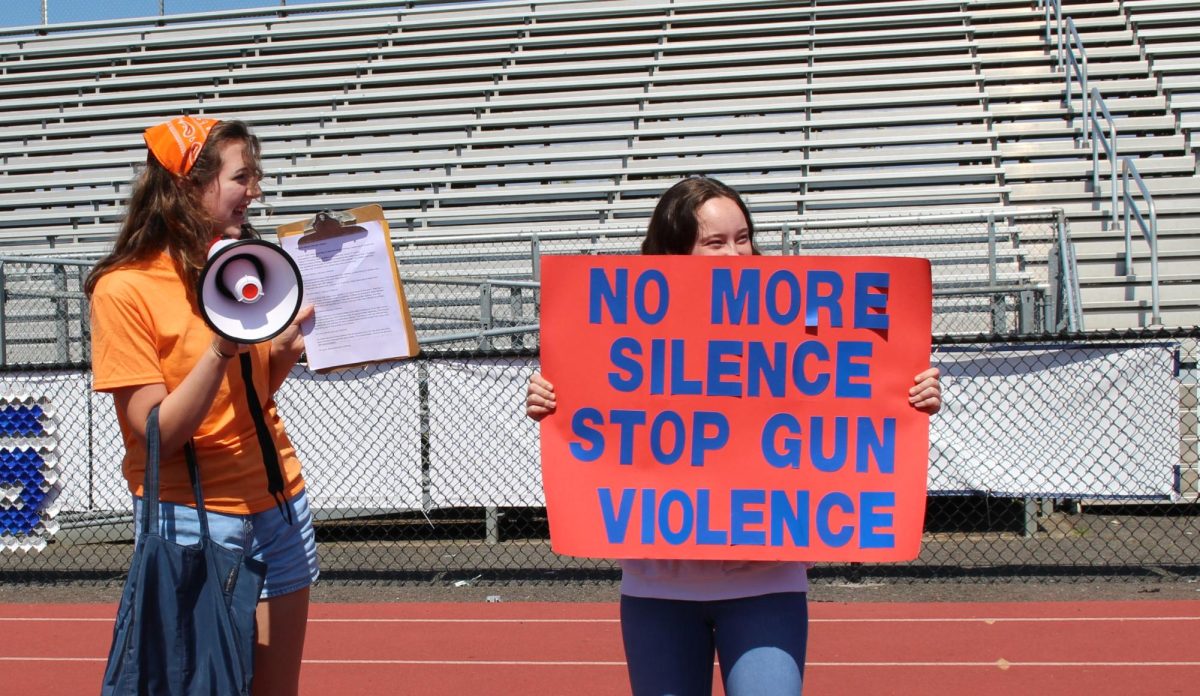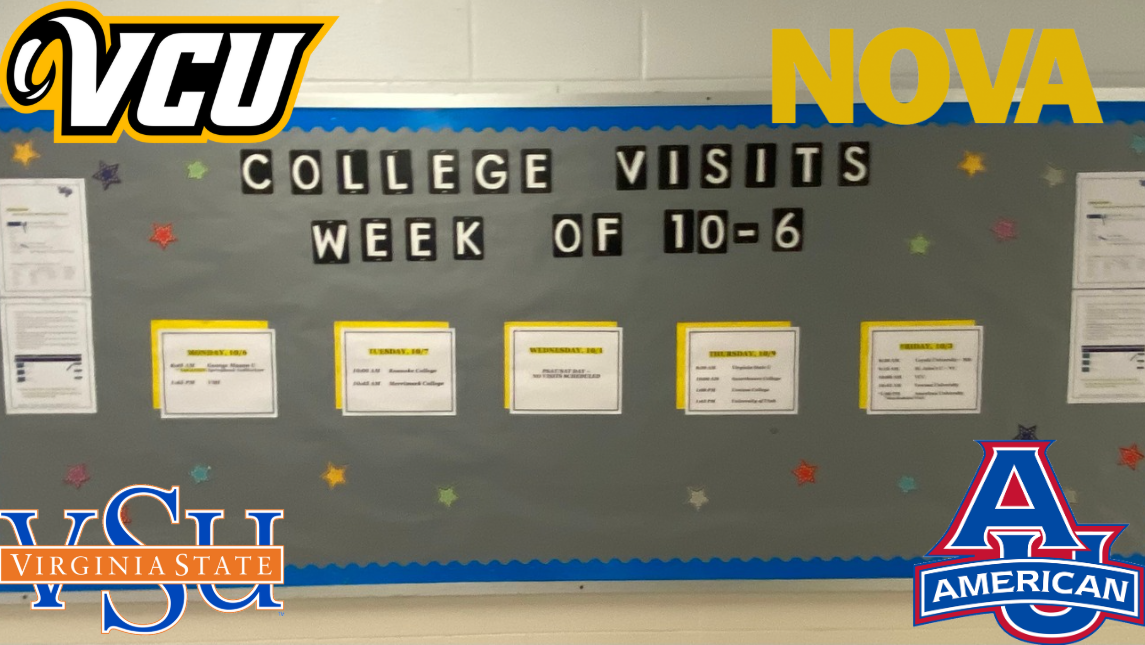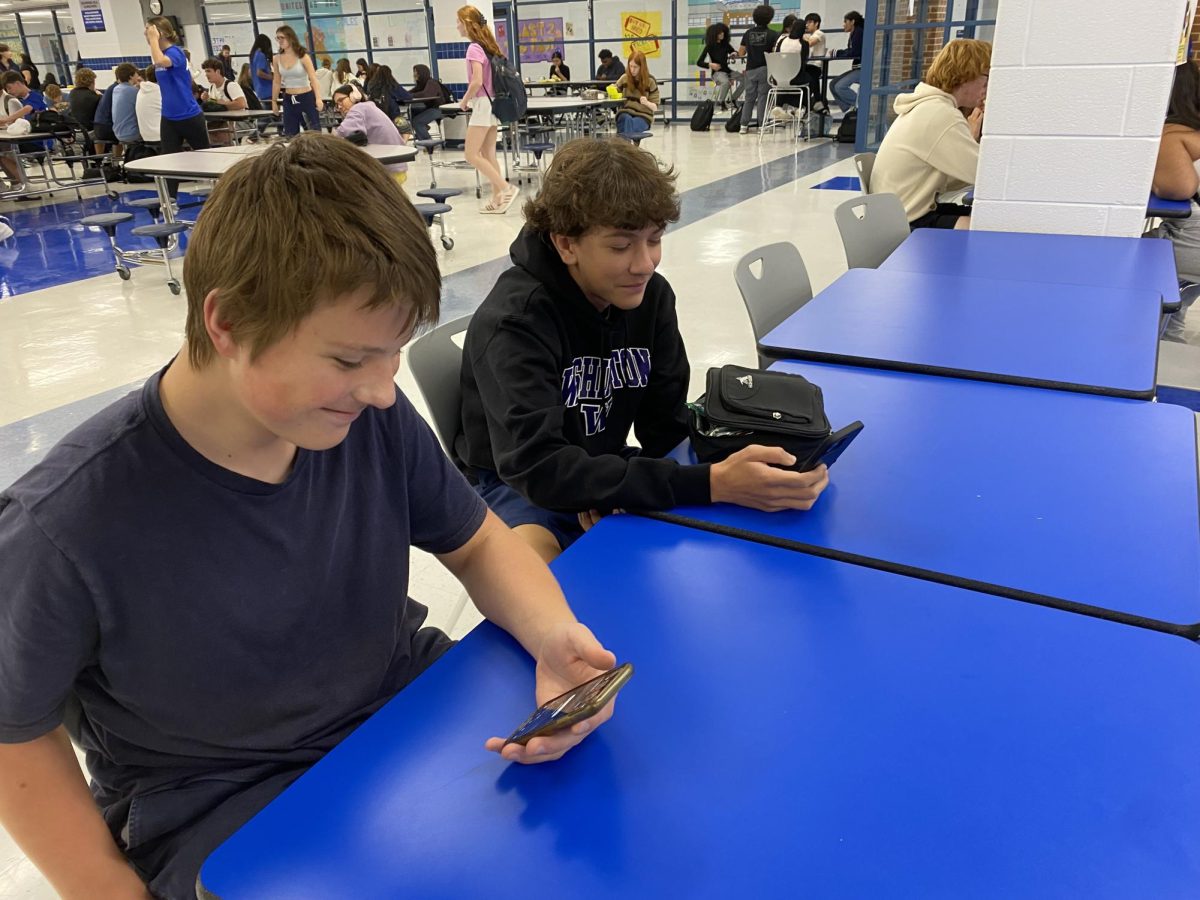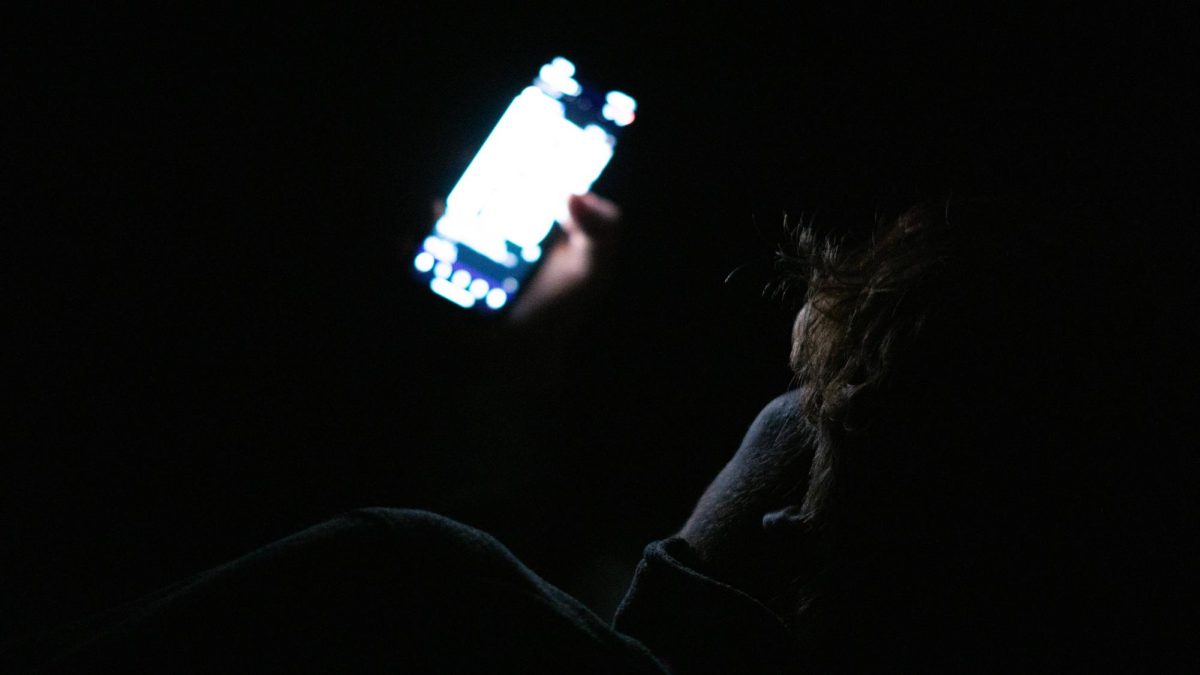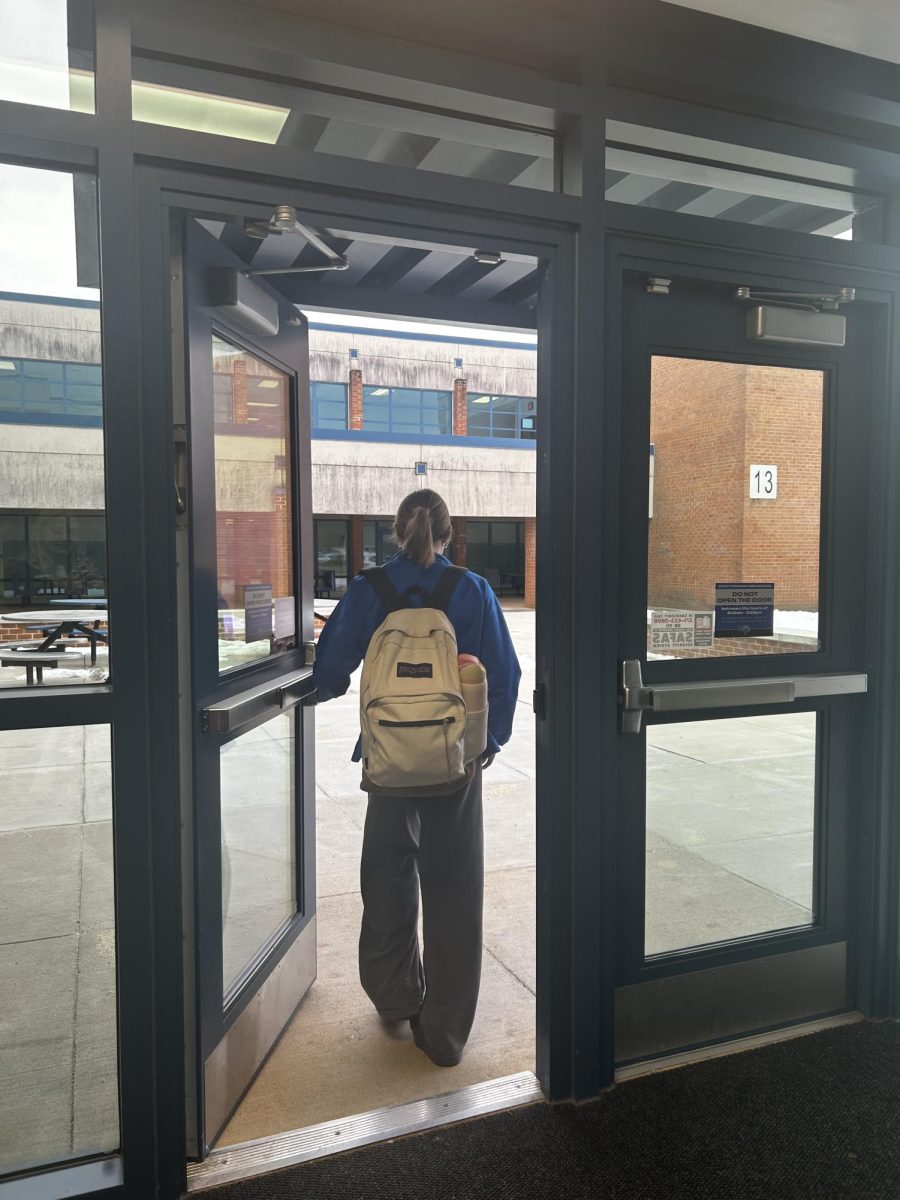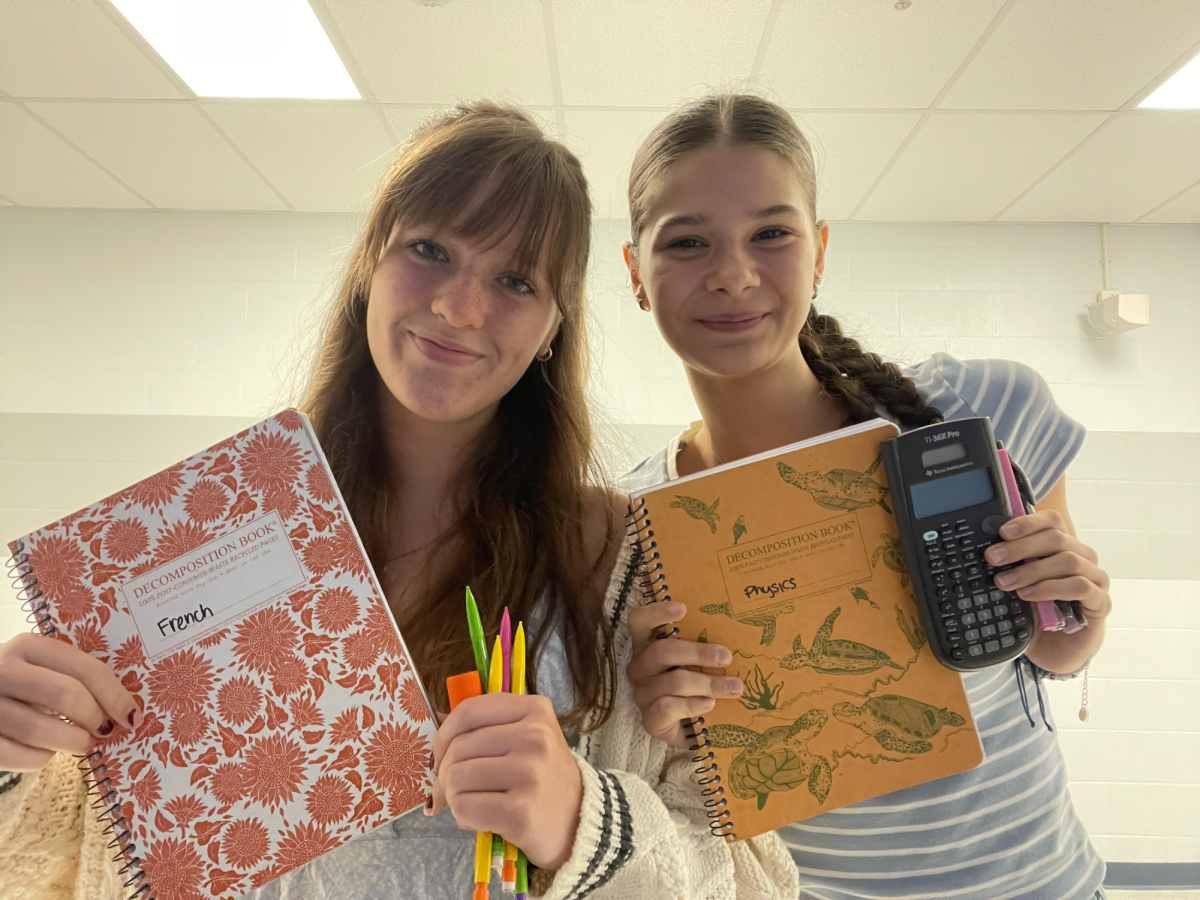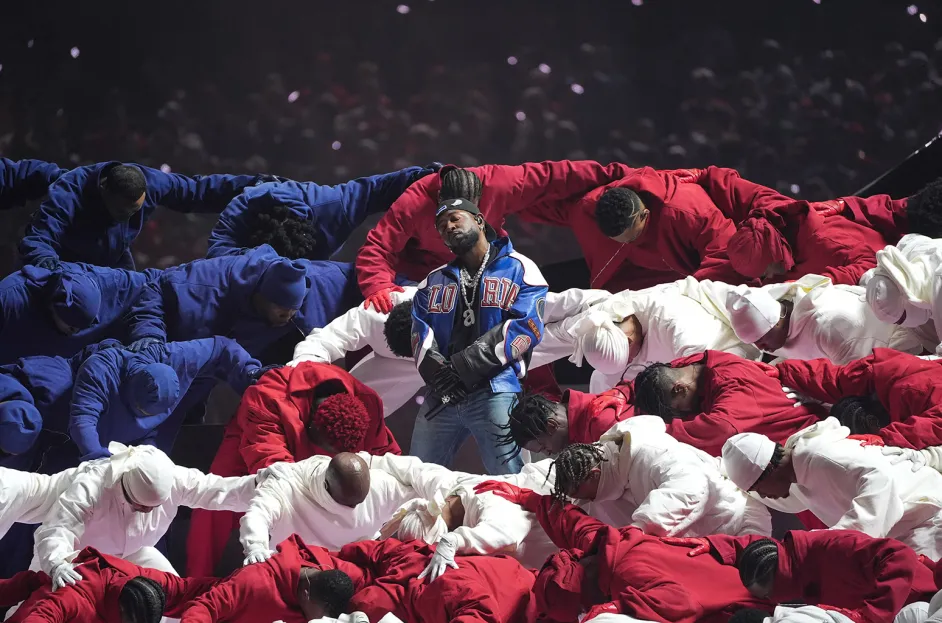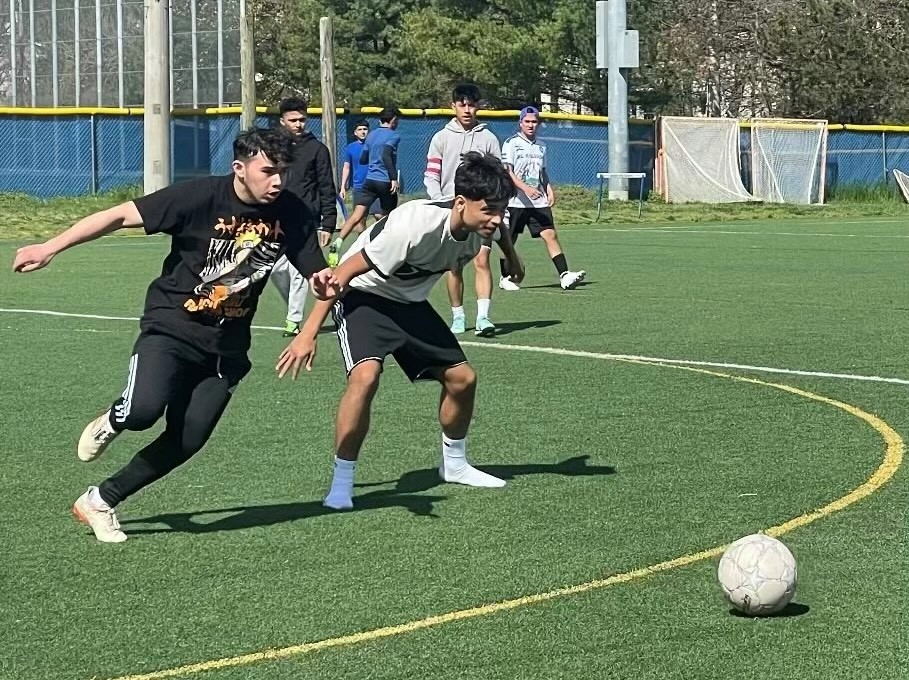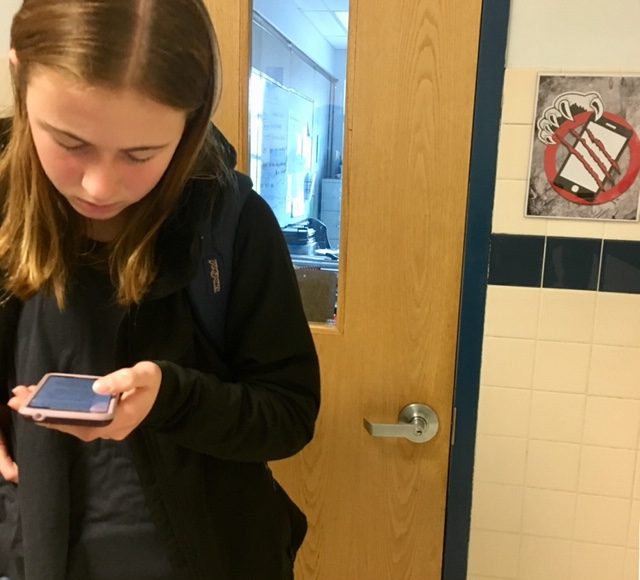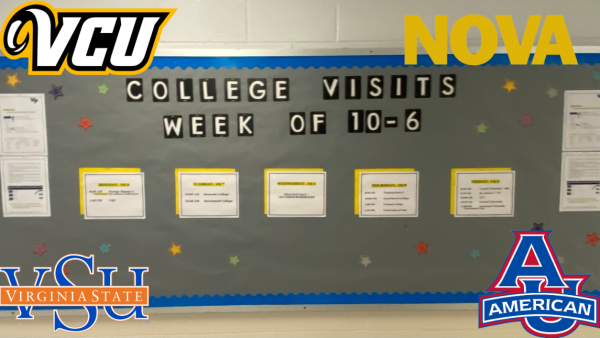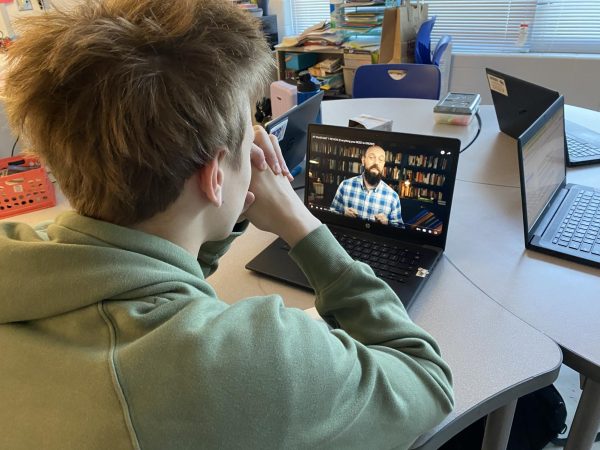Phone Ban Policy Boosting Engagement at West Po
Starting this school year, West Po banned the use of cell phones, according to Tangy Millard, West Potomac’s principal. “Teachers began working on this policy over the summer once the school determined it would be going to one-to-one computers for all students,” she said.
In this new system, every time a teacher finds a student on their phone during class, the teacher will offer a verbal warning and logs the infraction into a Google Form. If the same student is caught a second time, the infraction is logged, the administration team notified and the student’s phone confiscated. “At that point, to retrieve the phone, it must be picked up by a parent after the student has a conference with an administrator,” said Millard.
According to this research, phone use during instruction decreased multiple-choice test scores by a letter grade and a half, and that students in possession of their phones, even if they didn’t use them, scored a letter grade lower exams than students who did not have their phones.
The key to the policy being successful is that all teachers follow it to the letter. “My biggest caveat though was consistency, and I was worried they wouldn’t pull it off because it’s going to take everyone doing the same thing across the school, and if teachers aren’t consistent it’s going to fall apart. The kids will deal with whatever we come up with, it’s the inconsistency that kids can’t deal with. It’s one way here, it’s another way there, you don’t know what you’re walking into, and that’s not fair,” said Millard.
The policy seems to be working as according to Millard, since the start of the school year, changes have become apparent. “[One of the] unintended consequences of this is teachers talking about how they have been able to get through so much content, which they’ve never been able to do because [they’re] always stopping every five minutes: Put the phone away.”
Millard also reported that out of the approximately 2,667 students at West Po, only about 125 students had their phones taken over the first quarter.
“I’m pretty happy with [the policy], I see positive changes in class, I see student engagement up, I see that students are talking to each other, regular communication is up,” said Mr. James Dahlgren, a history teacher at West Po.
“I think having no cell phones is helpful [for getting good grades] because none of the other students are using them either so none of your friends are texting you so there are no distractions,” said Sean Curtain, 11th grade.
A concern that many students had was how this would affect their ability to communicate with their parents and others outside of school if they need to. One student sees the policy “…negatively, [as the policy] makes it harder for me to get in touch with my parents in an emergency,” said Hannah Orenstein, 10th grade.
According to Millard, the issues of contacting parents during the day hasn’t become much of a problem because students are allowed to be on their phones during each eight-minute passing period and the longer breakfast period as well as homeroom and lunch. In an emergency, a student’s parents can call the office to reach a student in class and vice versa, if the student has an emergency they can go to the office or clinic, she said.
According to data that has been compiled over the course of this first quarter, 609 students have received violations out of 2,667 students. According to a school official, these 609 students compiled a total of 1,024 violations over the first quarter. Thirty-seven percent of the violations were two-time offenders and an additional 14% and 6% were third and fourth violations, respectively.
Breaking that down further, 37.7% of the people who have received violations are freshmen, while juniors and seniors are around 17% each. The data also shows that after a spike in use during the second week of school, the amount of phone violations has gone steadily downward.
This policy has been introduced as a county-wide guideline but not all the schools have put it into effect yet. In this area, neither Hayfield or Mount Vernon have instituted this policy to date.
“I think it’s okay [for other schools not to follow the policy] because schools are very different, we’re a different school than Hayfield,” said Dahlgren.
Mount Vernon High School’s admin team is planning to have meetings over the next few weeks or so to talk over how to implement the policy in their school sometime in the near future, according to Mt. Vernon Assistant Principal James Shaffer.
There are also schools that are implementing the policy as required by the county but in a different way. At Rachel Carson Middle School, students must leave their phones in their lockers unless their teacher has a green sign on their door indicating the cell phone will be used, according to their website. If that is the case, students must keep their phones out of sight while moving to and from class.
When asked if every school should have the policy, Millard said, “I don’t know if the county will ever come out and say, you have to have this policy, but, I can see more and more schools picking [the policy] up because of the places that it’s working, that’s what people are paying attention to.”
In her Senior year at West Po, Mollie Shiflett wants to keep it real. She is Co-Editor-in-Chief of the West Po Wire and has been since sophomore year....





